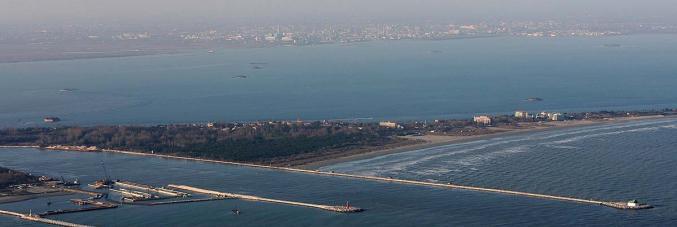
Mo.S.E and the chances of the morphological diversity of the lagoon
06.04.2022
The use of the Mo.S.E. (Experimental Electromechanical Module) mobile barriers to regulate tides (when water levels rise 110 cm above Punta della Salute) impacts the hydrodynamics and the transport of sediments within the lagoon. In particular, it reduces tide levels and increases the sediment resuspension from the bottom of lagoon shallows, which leads to the silting up of the canals and reduces the capacity of sandbanks to survive the progressive rise of lagoon waters. Without intervention, these processes will lead to a progressive flattening of the lagoon topography and substantially modify its current morphology.
The research paper published in Science Advances, Loss of geomorphic diversity in shallow tidal embayments promoted by storm-surge barriers, is the result of the collaboration between the Interdepartmental Center of Hydrodynamics and Lagoon Morphodynamics (CIMoLa), the Department of Civil, Construction, and Environmental Engineering (ICEA), and the Department of Geosciences of the University of Padua. Other involved parties include the Department of Environmental Sciences, Informatics, and Statistics of the 'Ca' Foscari University of Venice and the Environmental Engineering Department of the University of Calabria. The research was part of the Venice 2021 Project, funded by the Venice Water Authority through CO.RI.LA - the Consortium for coordination research on the Venice lagoon system.
The research, coordinated by professors Luca Carniello of the ICEA Department and Andrea D’Alpaos of the Department of Geosciences of the University of Padua, analyzed the effects of the morphology of the Venice lagoon when the first closures of the Mo.S.E. took place in autumn 2020.
Researchers analyzed the effects of the inlets on sediment transport and the morphological evolution of the Venice lagoon produced by the mobile floodgate system using integrating modeling tools and field measurements.
Once removed by the waves, sediments deposit inside the canals with negative consequences on the exchange of water in ordinary conditions and on the increase in dredging costs to maintain the water’s navigability. The reduction of tide levels in the lagoon also leads to a reduction in the volume of sediments deposited on the sandbanks.
These sediments, which allow the sandbanks to survive rising sea levels, deposit when the Mo.S.E. barriers are in operation during high water events. Therefore, the repeated and prolonged use of the Mo.S.E. holds certain risks, if not appropriately counterbalanced, undermining the growth of the salt marshes and threatening its existence along with the numerous ecosystem services that lagoons provide.



